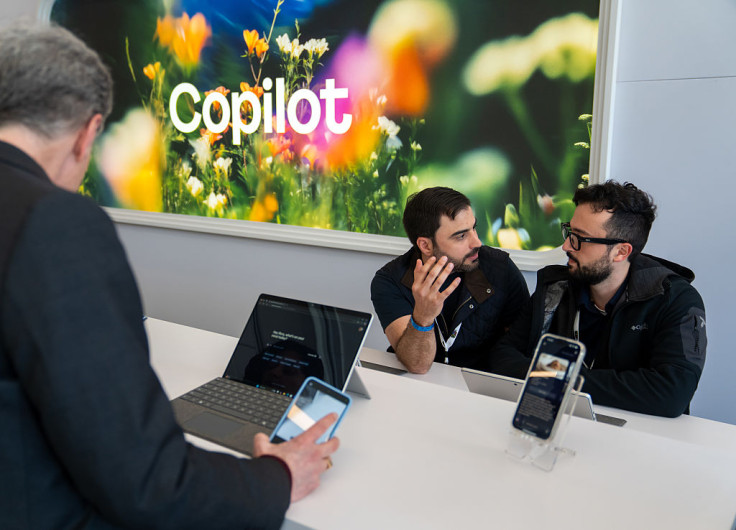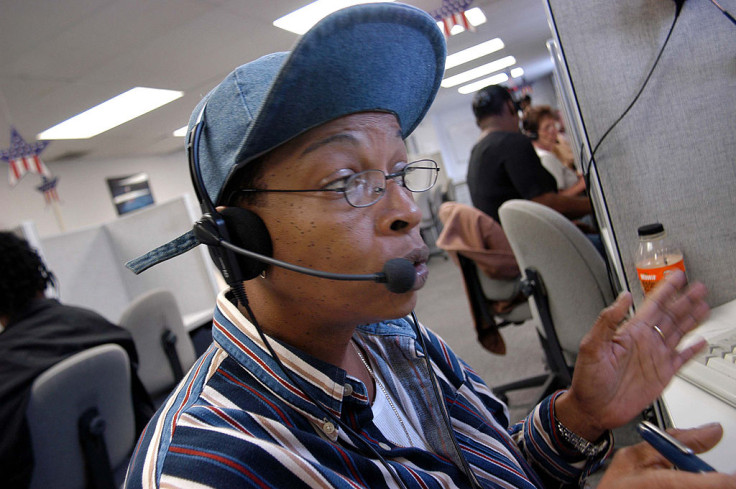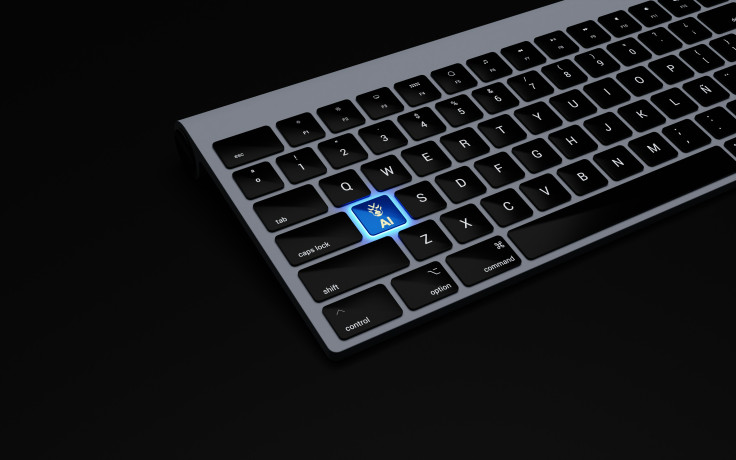How Voice AI Is Quietly Changing the Way We Work — And What It Means for You
Voice-powered tools are now embedded in meetings, messaging apps, and email — transforming productivity even for users who never type a single prompt.
Welcome to Tech Times' AI EXPLAINED, where we look at the tech of today and tomorrow. Brought to you by

You might think AI at work means typing prompts into ChatGPT or getting a slick summary from your inbox. But the real shift is happening in your ears. From whispered prompts during Zoom calls to voice bots taking fast food orders, AI is quietly changing how we work, and you might not even realize it's there.
Voice AI isn't just a flashy gadget or customer service gimmick. It's becoming a built-in layer across industries: transcribing your meetings, answering your calls, and even drafting your doctor's notes. As tools like Microsoft Copilot, Otter.ai, and drive-thru voice bots quietly embed themselves in daily workflows, they're not only reshaping tasks, they're shifting what it means to show up, speak up, and stay relevant in a workplace that's learning to listen.
Game studio founder and voice AI advisor Mike Sorrenti is bullish on the tech. "Voice ai is an excellent thing. It can be used for translation and many other things and if a very natural interface for kids, and older adults especially those with mild disabilities such as arthritis," he said in an email.
Enhancing Workplace Productivity with Voice AI

A recent UK government study showed that civil servants who used Microsoft's Copilot AI for administrative tasks saved an average of 26 minutes a day, which works out to about two weeks of gained time per year. Voice AI plays a key role in this shift from the pre-AI workplace to the current AI workplace, becoming useful in transcription, summarization, and virtual meeting assistants. Previously, you'd have to have a human assistant sit in on your Zoom or Microsoft Teams meetings to take notes, or delegate someone who may or may not be good at live note-taking to manage these.
Voice AI assistants can now log, transcribe and summarize your meetings, often without the people in the meeting really understanding what's being recorded or how it's being analyzed. Workers are already adjusting how and when they speak during meetings, knowing that their words might be captured and re-contextualized by AI summaries.
Otter.ai has also introduced a voice-activated AI version of its AI meeting assistant, letting users join and manage meetings without having to take notes. Now that we're used to asking Siri to take a note or set a timer, asking your AI voice agent to start recording will be a cinch. The shift from passive transcription to an interactive agentic AI system is subtle, but it is here. Users can even give verbal commands mid-meeting, obviating the need for someone who understands the user interface of an app, for example, or web controls, all in real-time.
This isn't a backend utility, either; rather, tools like Otter are becoming active participants in meetings, giving us a glimpse at a future where AI agents might take on even more collaborative roles.
While tools like this save time and offer easier control, the issues of privacy, consent, surveillance, and etiquette in meetings (especially in hybrid or remote work environments can be substantive).
But first, a quick casting call for our sponsor and partner of AI EXPLAINED this month, PlaudAI - the No.1 AI note-taker that does exactly what you'd imagine an AI assistant can do in 2025. Do you use voice AI in your daily work? Are you a journalist, doctor, lawyer, educator, or creator doing something smart with your voice? We're spotlighting modern professionals for a new series with our sponsor, Plaud.ai — share your story with us here, and you could be featured and receive a sample of PlaudAI.
Voice AI Has Already Transformed Customer Service and Retail Experiences

As a consumer, driving through the fast-food lane can be a common experience. You pull up to the speaker, ask for the food you want, and go grab it after you pay at the next window. If you've been in one recently, you may have heard some rudimentary voice AI ask you if you used a mobile ordering app. But that's all about to get even more AI-powered.
Sophie Fennelly knows that voice AI is happening now. "As CEO of Sales TQ, with over a decade in enterprise sales and an analytical background from MIT, I've helped small businesses adopt emerging technologies—including voice AI—to improve operations," she wrote in an email. "Voice AI is no longer just futuristic hype; it is actively reshaping how we work and live."
Hungry Jack's, a fast food chain in Australia, just began trials of a new AI-driven voice assistant for its own drive-through orders. Customers appreciated the system's politeness while the company likely appreciates the potential for late-night staffing. Employees, though, might start to feel the pinch, or start moving to parts of the job that tech can't yet replicate, like solving problems, connecting with people, or hopping in when the system makes a mistake.
Australian franchises of KFC have also started testing out AI-driven voice ordering, though customers there have pushed back a bit, saying they prefer human interaction and their orders being misinterpreted by the AI window jockey.
Still, even this workplace is evolving as AI starts to support and replace humans in these high-turnover, low-wage roles. As a consumer, you might have to learn how to talk to AI bots, and as a worker, you'll likely need to up your skills to fit roles that need a more human touch.
Revolutionizing Healthcare with Ambient Voice AI

Microsoft's DAX Copilot automates recordkeeping, updates patient records, and drafts care plans by listening in to conversations between doctors and patients. The idea is that physicians can spend more time on patient care than on record keeping, thereby improving health outcomes for more people.
Microsoft is also transforming the workplace of nurses, with ambient voice and other AI technologies becoming integrated into nursing workflows, alleviating the burden of so much documentation, reducing burnout, and allowing nurses to spend more time on patient care.
Global Reach and No-Code Tools for Voice AI
A startup in Bengaluru (formerly Bangalore) in southern India is offering a no-code conversational AI platform that lets other businesses deploy real-time, multilingual voice agents for customer support and services. Ring AI has expanded beyond India to the Middle East and Latin America, supporting languages like Arabic and Spanish.
Global workplaces that couldn't afford the high-cost development of their own voice AI systems can now contract with Ringg AI and deploy AI agents to help them with their businesses. While that does mean that AI tools may replace workers at major companies, it does mean that smaller shops can afford the cost of entry to compete on the level of voice AI at larger corporations.
Gev Balyan, CEO of Hoory AI says, "Startups and solopreneurs now have an always-on assistant — answering calls, qualifying leads, booking — at enterprise scale, without enterprise cost."
What It All Means For You?

So what does the current adoption of Voice AI mean for you. Whether you're running (or taking) meetings, answering customer support calls, or just trying to get through all the email you receive in a day, Voice AI is likely becoming a bigger part of your day, whether you realize it or not. The tools are changing how we connect with colleagues and higher-ups, the tasks that make up our daily work, and even what kinds of jobs are growing (or shrinking).
As an employee, it could mean you'll do fewer routine tasks and spend more time thinking, making decisions, or even managing these AI tools directly. But you'll still need to learn to work with AI, knowing what it's good at, how to manage it when it makes mistakes, and how to communicate with AI tools that are always listening.
As a business owner, you might feel like AI will boost your workers' productivity while reducing costs, but you'll also need to keep an eye out on issues of privacy, trust, and training. You may want to start hiring people who have higher levels of judgment, empathy, and communication to be able to work with your new AI systems.
The bottom line is that AI isn't coming for your job all at once; it is coming to change parts of your job already. The best thing here is to stay relevant by focusing on what you can do that AI can't, yet: connect with others, understand nuance, and adapt when things go off the rails.
Originally published on Tech Times





















